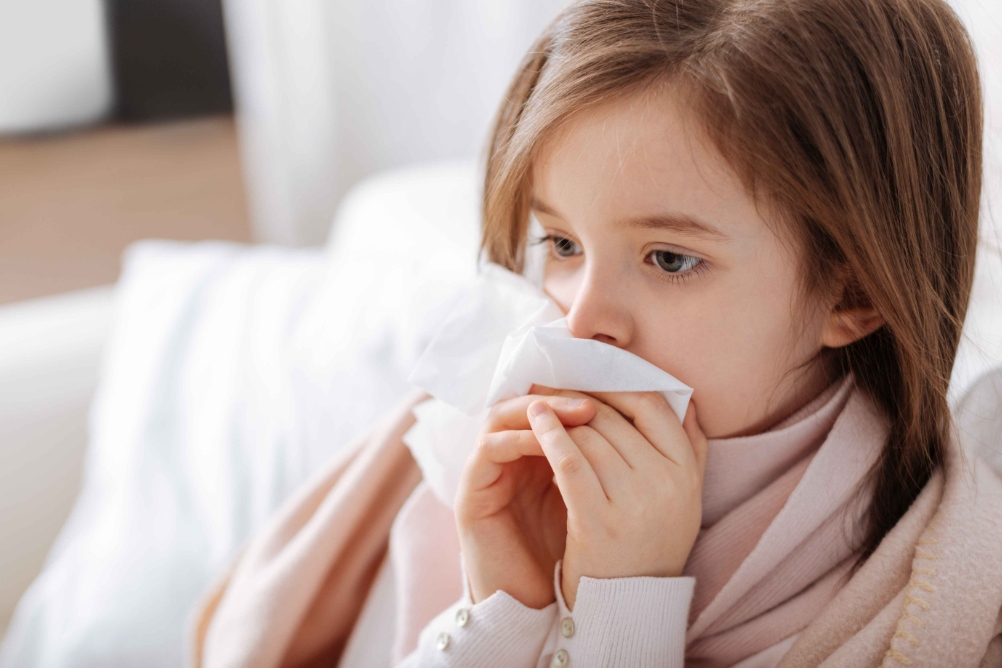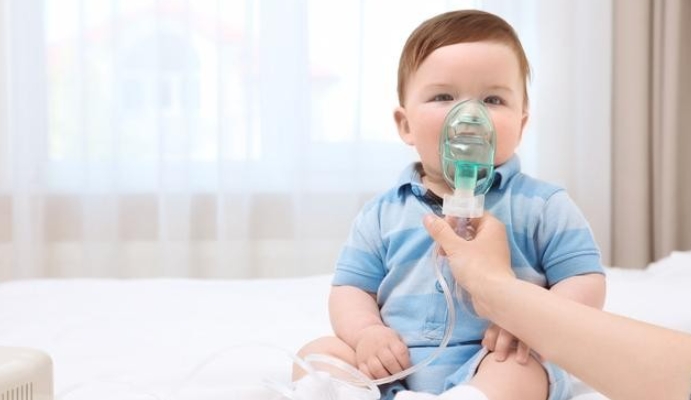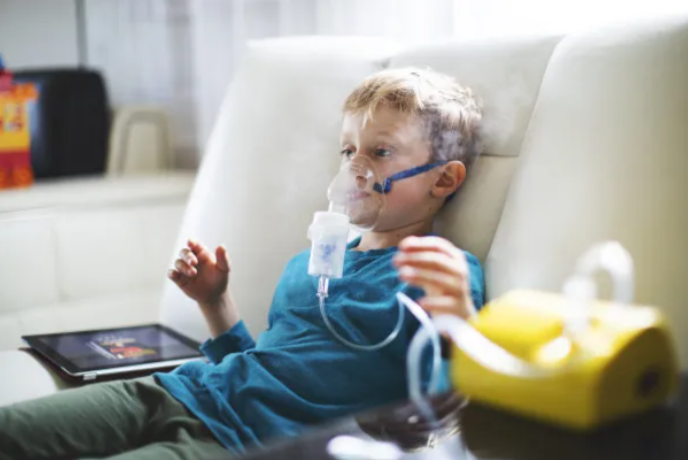With the beginning of winter, children’s respiratory diseases have entered a period of high incidence. What are the current respiratory diseases? How can I prevent it? What should I pay attention to after infection?
“Entering the winter, the north is mainly dominated by influenza, in addition to rhinovirus, mycoplasma pneumoniae, respiratory syncytial virus, adenovirus and other infections. In the south, taking the pediatrics department of our hospital as an example, the infection of mycoplasma is still the main one in the past three months.” Dr. Chen, an expert, said that from the reception data, the first 10 months, pediatric outpatient patients increased by about 60% compared with the same period last year, and fever patients accounted for about 40%-50%; The number of emergency departments has increased by more than two times, and fever patients account for about 70%-80%.
It is understood that the continuous rise of acute respiratory diseases in children is related to the superposition of a variety of respiratory pathogens. The most common are acute upper respiratory tract infections, bronchitis, pneumonia, allergic diseases and so on. Among them, acute upper respiratory tract infection is more common, including cold, laryngitis, tonsillitis, sinusitis and so on. Pneumonia is the leading cause of hospitalization or transfusion in children.
“Children’s respiratory infections are mostly caused by viral or bacterial infections, if the symptoms are not serious, mental response is good, do not need special treatment, can recover naturally.” Only need to rest properly, eat a light diet, drink more water, keep indoor ventilation, and enhance their immunity. However, if there is severe respiratory infection, such as severe pneumonia, severe wheezing, hypoxia, general discomfort after infection, persistent high fever, convulsions, etc.; Shortness of breath, dyspnea, cyanosis, obvious loss of appetite, dry mouth, fatigue; Shock, lethargy, dehydration or even coma require prompt medical attention.” Expert Dr. Chen warned that large hospitals are crowded with people and have long waiting times, and the risk of cross-infection is high. If there are children at home with mild symptoms, it is recommended to go to primary health care institutions.
In view of the recent occurrence of more mycoplasma pneumonia, hospital experts said that this is a disease caused by a special microorganism, not bacteria or viruses. It is not directly related to the novel coronavirus and is not a mutated virus. Although both diseases are transmitted through the respiratory tract, the pathogens, treatment and prevention methods of the two diseases are different.
Experts remind parents that after their children are infected with mycoplasma pneumonia, they should go to the hospital in time and treat them according to the doctor’s recommendations. Treatment methods include the use of anti-mycoplasma drugs for treatment, nutritional supplements, strengthen the body’s immunity, and pay attention to rest, maintain a good lifestyle.
Know more:
1, children after respiratory infection what symptoms? How can I prevent it?
Respiratory infections in children are mostly caused by viral or bacterial infections, and symptoms include:
Fever: it is often the first symptom after infection, and the body temperature can reach 39℃ or more;
(2) Cough: children cough after infection is often one of the more common symptoms, dry cough or mucus sputum;
③ Sneezing;
Sore throat: After infection, children will feel sore and swollen throat;
⑤ Runny nose: there may be symptoms of nasal congestion and runny nose;
⑥ Headache, general fatigue and other non-specific symptoms.
Ways to prevent respiratory infections in children:
(1) Insist on wearing masks, ventilation, maintain frequent hand-washing habits, and actively vaccinate key groups;
(2)When there are respiratory symptoms, do a good job of protection, maintain social distancing, to avoid cross infection;
(3) Rationally adjust diet and exercise, maintain indoor air circulation or use air purifiers to reduce the risk of transmission of pathogens;
(4) Large hospitals are densely staffed and have long waiting times, and the risk of cross infection is higher. If there are children at home with mild symptoms, it is recommended to go to primary health care institutions.
2, Which children’s respiratory diseases are self-limited diseases, which need timely medical treatment?
In children respiratory diseases, most are viral infections, if the symptoms are not serious, mental response is good, do not need special treatment, can recover naturally. Only need to rest properly, eat a light diet, drink more water, keep indoor ventilation, and enhance their immunity.
However, the following respiratory diseases require prompt medical attention:
① Severe respiratory tract infection, such as severe pneumonia, severe wheezing, hypoxia, general discomfort after infection, persistent high fever, convulsions and other symptoms;
② shortness of breath, dyspnea, cyanosis, obvious loss of appetite, dry mouth, fatigue;
③ Symptoms such as shock, lethargy, dehydration or even coma;
④ The effect of conventional treatment is not good, such as no significant improvement after a few days of treatment, or the condition deteriorates in a short time.
3, children respiratory disease pathogen superimposed infection how to deal with? How to prevent it?
Children’s respiratory diseases are usually caused by viruses, bacteria and other pathogens, these pathogens can infect children alone or simultaneously, forming a pathogen superimposed infection, increasing the complexity of the disease.
For pathogen superimposed infection of respiratory diseases in children, correct diagnosis and treatment should be carried out according to clinical manifestations and laboratory tests.
Treatments include antibiotic treatment for bacterial infections; Viral infection, specific antiviral treatment, and symptomatic treatment.
The prevention of pathogen superimposed infection of respiratory diseases in children can be started from the following aspects:
Maintain personal hygiene, wash hands frequently, wear a mask, and do not come into contact with sources of infection and sick people;
② Avoid excessive fatigue, pay attention to rest and diet, enhance physical strength;
③ Strengthen indoor ventilation to keep the air fresh and dry;
Eat more vegetables and fruits;
⑤ Vaccination to enhance immunity.
In addition, in special serious cases, it is necessary to seek medical attention in time, treat correctly, and avoid buying and taking medicine on your own.
4, for many parents nervous mycoplasma pneumonia, is it a mutation of the new coronavirus? What should I do if my child is infected? How can I prevent it?
Mycoplasma pneumonia is a disease caused by a specific microbe, not a bacterium or a virus. It is not directly related to the novel coronavirus and is not a mutated virus. Although both diseases are transmitted through the respiratory tract, the pathogens, treatment and prevention methods of the two diseases are different.
After the child is infected with mycoplasma pneumonia, he should go to the hospital in time and be treated according to the doctor’s recommendations. Treatment methods include the use of anti-mycoplasma drugs for treatment, nutritional supplements, strengthen the body’s immunity, and pay attention to rest, maintain a good lifestyle.
To prevent mycoplasma pneumonia, parents can take the following steps:
① Pay attention to the child’s personal hygiene habits, wash hands frequently, clean the nasal cavity;
② Avoid children from contact with mycoplasma pneumonia patients, and as much as possible to go out;
③ Pay attention to the circulation of indoor air to keep the air fresh and clean;
Maintain good living habits, including reasonable diet, adequate sleep and moderate exercise to enhance the body’s immunity;
(5) For high-risk children (such as premature infants, low body weight infants, immunocompromised, suffering from chronic diseases or congenital heart disease), regular vaccination should be carried out.
Post time: Nov-19-2023





